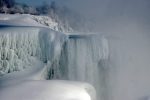Hi everyone! I am happy to report that I've optimized a set of pressure conditions where my xPAP treatment is now fully effective (AHI 2.5).
The key realization was that once my obstructive events got started, they became progressively harder to resolve.
Thus in using auto-adjust mode, it proved to be essential to start at a pressure that already eliminated most of the events, and then to use the higher pressures to eliminate the residual events.
Original conditions: MIN EPAP = 10 cm, MAX IPAP = 20 cm, PS = 4 cm
Final conditions: MIN EPAP = 16 cm, MAX IPAP = 20 cm, PS = 0 cm
I established the minimum effective pressure by systematically trying out CPAP conditions night after night (4, 8, 12, 16, 18 cm).
Anything less than 16 cm was completely useless.
Here is an example of a night on 8 cm CPAP. Lots of events, many of long duration (max 80-100 sec).

And here is a night on 16 cm CPAP, which eliminates some, but not all, of the events. I would have nice long stretches where I was sleeping peacefully, but there would be periods where there was just not enough pressure to force the airway to be open. These trains of events would cause me to notice my mask being on, and I would tend to take it off in the middle of the night as well. So it was an imperfect solution.

Then I allowed the machine to adaptively adjust the pressure within a range of 16 to 20 cm. The result is a nearly complete elimination of obstructive events, consistent and reproducible over the last 3 nights:

If I track the applied pressure, I can see the machine cranking up as soon as it notices the events starting, which is enough to force the airway open. Interestingly, just running it continuously at a higher pressure (say 18 cm) is not effective -- the time rate of change of pressure seems to play a role.
As a side benefit, with the events gone, I sleep more soundly and keep my mask on all night, which makes the therapy even more effective. These past days I've awoken so comfortably I wondered whether the machine was actually on -- then realized it was actually blowing 20 cm!
Lessons learned in self-titrating:
-- For adaptive algorithms, the minimum pressure needs to be set at at the minimum EFFECTIVE therapeutic pressure. In my previous trials, I used 10 cm. The machine never had a chance to get to where it needed to go before the train of obstructive apneas took over. The common practice of setting it at 4 cm is likely ineffective. THE LOWER BOUND PRESSURE SHOULD BE SET HIGH.
-- The UPPER BOUND PRESSURE should be set JUST HIGH ENOUGH TO ELIMINATE RESIDUAL EVENTS (say during REM sleep).
Reading forum posts in hindsight, I think others have had similar experiences in adjusting their pressures.
Also, as I mentioned previously, I am exploring combination oral appliance therapy. My mouthpiece should arrive in another 2 or 3 weeks. This will hopefully enable me to use lower pressures, and may help with other side-effects too (like "chipmunk cheeks" and a very dried out mouth).
But I am delighted to have established an effective baseline therapy and am looking forward to seeing improvements related to the resolution of the condition over the next months. Thanks to everyone for their helpful suggestions.
















